Contrasting Perspectives on the Islamic Arts Biennale 2025
19 May 2025
Share
By Michalina Franasik - Photographer, Writer, Treasure House Fair Communications Manager
Saudi Arabia is undergoing a cultural transformation, with the Kingdom making bold steps to elevate the role of arts and culture on both national and international stages. At the heart of this evolution was the Islamic Arts Biennale 2025 in Jeddah—a landmark event, which just entered its final week, closing 25 May. Centered on historic Islamic objects, the Biennale provided a dynamic platform for exploring Islamic art across different time periods.
Two renowned London-based art dealers, Lawrence Van Hagen and Amir Mohtashemi, attended the Biennale, offering unique perspectives on how the event bridged the past and present, particularly in the dialogue between contemporary and antique Islamic art. Adding further depth to the conversation, John Ramsay Oliver, Country Director of Turquoise Mountain in Saudi Arabia, shared insights from the perspective of the global charity, highlighting its role in preserving and promoting traditional craftsmanship in the region.
Spirituality and Identity in Islamic Art:
Hosted at King Abdulaziz International Airport, within the historic Western Hajj Terminal designed by Skidmore, Owings & Merrill (SOM), the venue was strategically located near the holiest cities in the Islamic world, Makkah and Madinah. Named after the annual pilgrimage to Makkah, the terminal served as a key departure point for pilgrims, further deepening the event’s connection to spiritual journeys. The Biennale’s spatial design blended indoor and expansive outdoor areas, encouraging both communal gatherings and solitary moments of reflection, particularly in the gardens filled with monumental contemporary installations. Visitors were able to sit on the benches, feel the subtle wind, and spend as much time as they wanted, often reaching a meditative state.
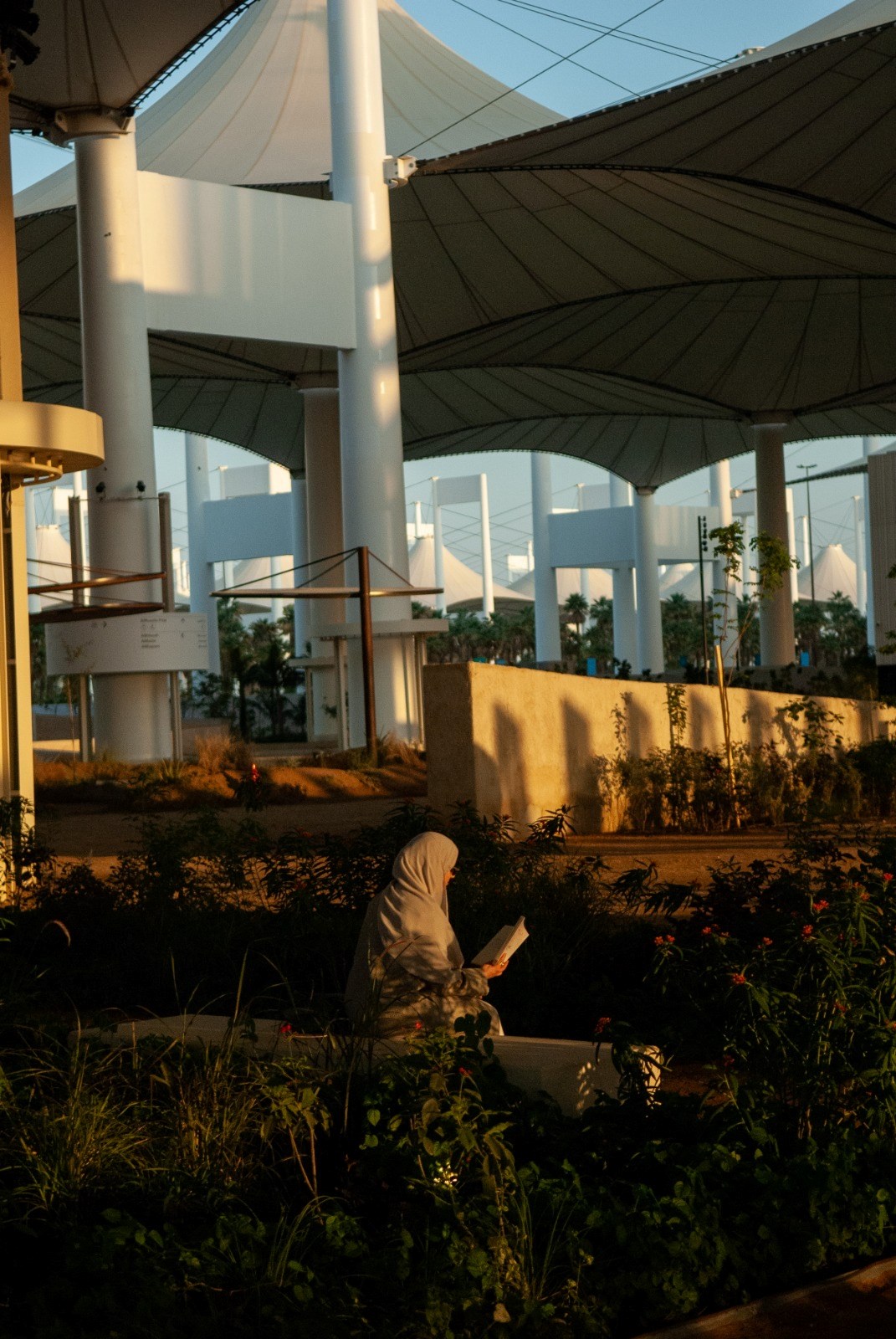
Outdoor spaces at Islamic Arts Biennale 2025
Van Hagen noticed that the blending of past and present provides “fresh insights into the evolving role of religion in today’s world.” He points out that revisiting religious iconography in contemporary art is “not a new phenomenon,” and highlights exhibiting artists such as Nicolas Party, whose works resembles Renaissance-style altarpieces, and Jem Perucchini, who incorporates golden frames and religious symbols like staffs and handheld orbs, drawing on Catholic iconography. Amir Mohtashemi agrees with Lawrence but also emphasises the importance of preserving the spiritual depth inherent in traditional Islamic art. “While contemporary works contribute to the conversation, we must not lose sight of the historical and spiritual dimensions that have shaped Islamic artistic traditions,” he argues. The curatorial team, led by the contemporary artist Muhannad Shono, the Contemporary Art Curator in the lead, balances the traditional and the modern perfectly. Lawrence points to his favourite piece Before the Last Sky, a fabric installation by Nour Jaouda, as a prime example. Nour, a graduate of the Royal College of Art, sources fabrics from markets near her homes in Cairo and London, which she hand dyes. The raw, earthy quality, with rich desert browns and soft blues evoke the Saudi landscape, embodying how “modern aesthetics can blend with traditional Islamic concepts.” Lawrence also admires the architectural references in the metal frame supporting the installation, noting how the entire fabric element is composed of a harmonious balance of layered cut-out shapes and organic forms.
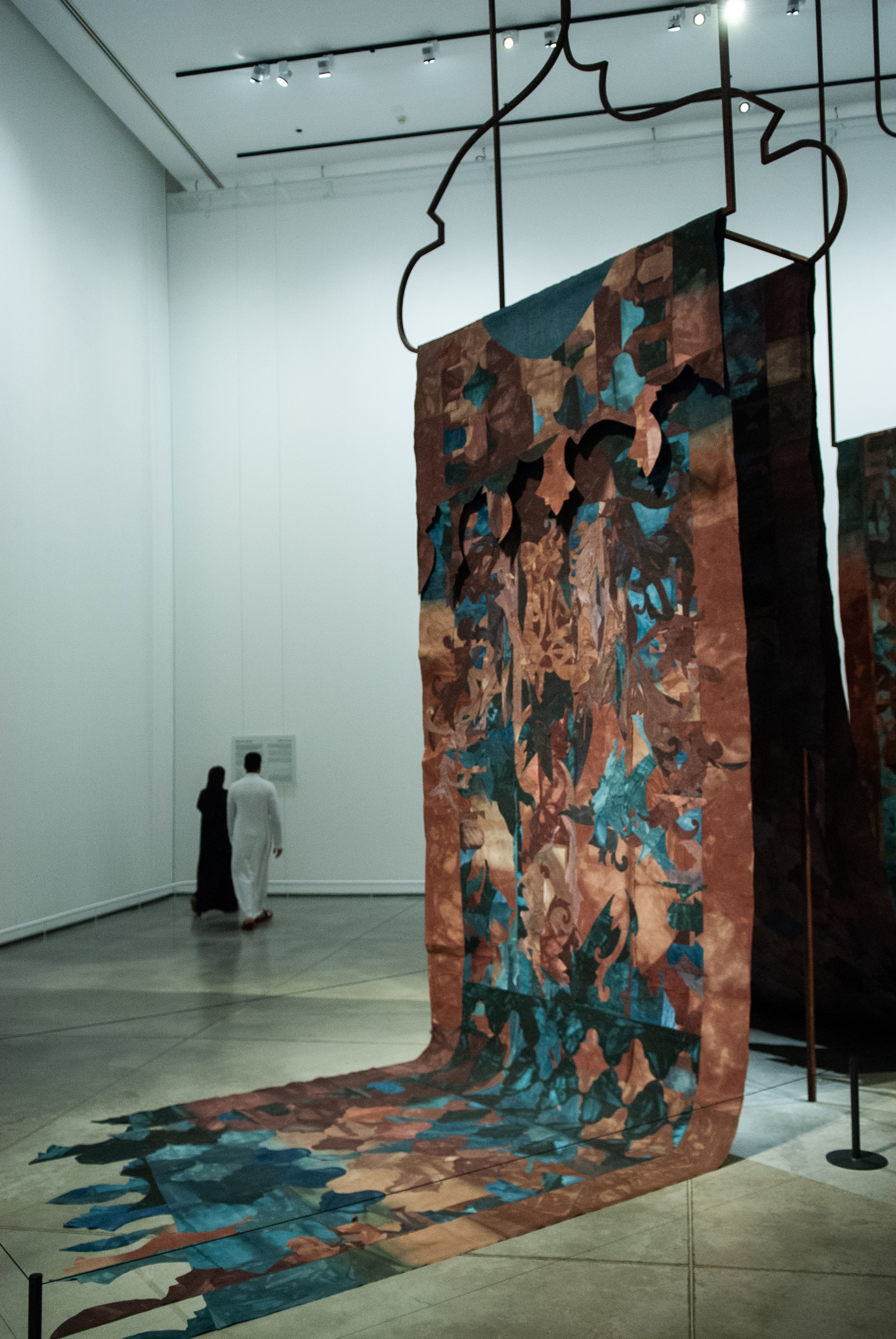 Nour Janda, Before the Last Sky, 2025
Nour Janda, Before the Last Sky, 2025
Biennale as a global platform
The Biennale also served as a global platform that united Islamic art from across the world, showcasing pieces loaned from major academic institutions such as the Louvre Museum, the V&A Museum, the Museum of Islamic Art, the Ahmed Baba Institute, and cultural centres in Saudi Arabia. This collaboration emphasized the rich heritage and ongoing presence of Islamic art, bringing together treasures from diverse locations including Tunis, Tashkent, Timbuktu, and Yogyakarta—many of which had never been seen together before. Lawrence Van Hagen noted that the Biennale was “not just a dynamic dialogue between different time periods, but also a conversation between various geographies, with works loaned from all over the world,” underscoring its role as a meeting point for a range of modern interpretations and practices of Islamic art. The event demonstrated how Islamic art had developed across different countries, with shared aims but distinct aesthetics shaped by geographical and cultural contexts.
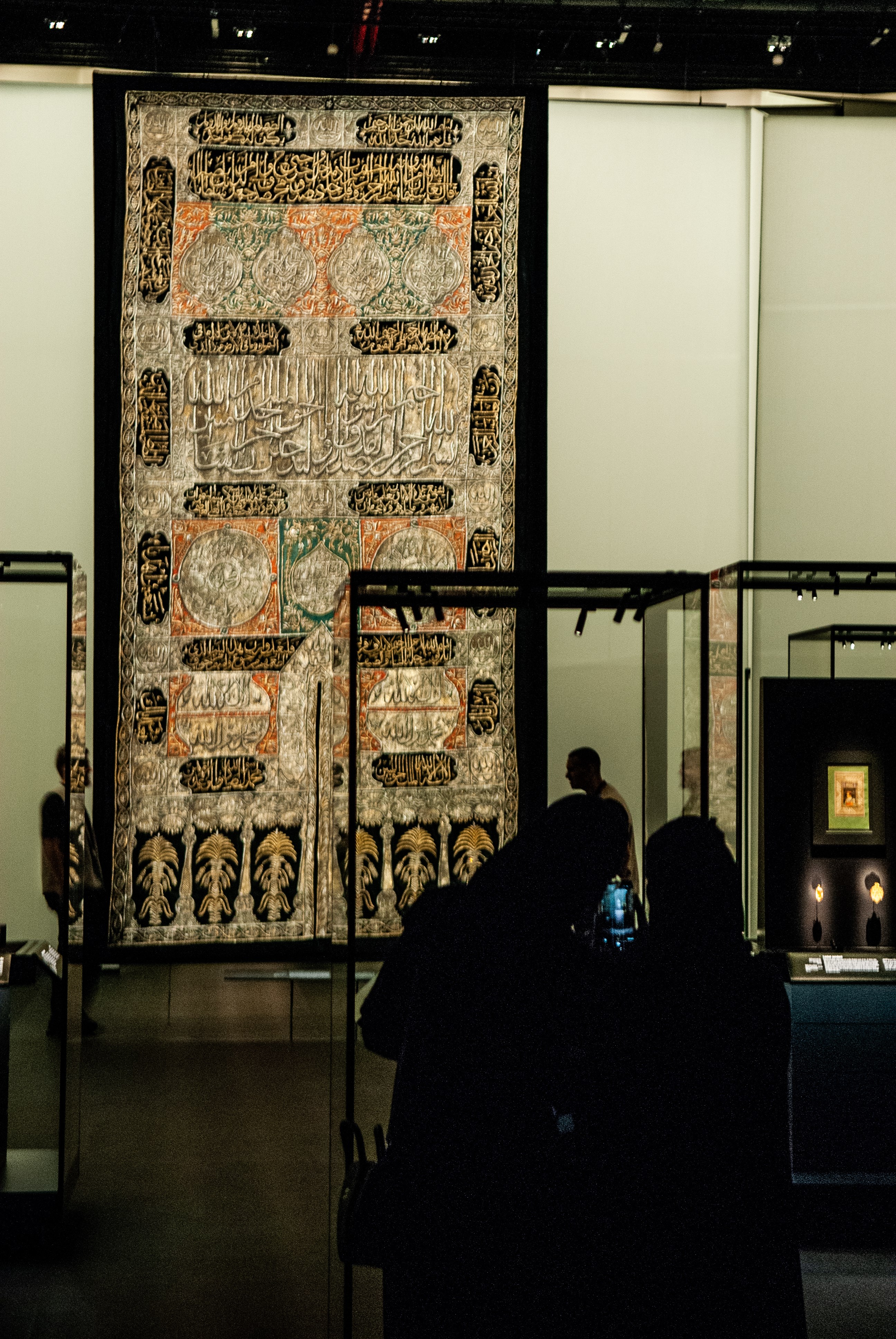
Inside Al-Muqtani Pavillion
The exhibition was organised into seven thematic sections rather than following a chronological order, offering visitors the freedom to explore the works at their own pace. This approach encouraged reflection and interaction, with passionate young Saudi guides eager to share additional insights in each pavilion. As Amir Mohtashemi observed, “Each exhibition carved out its own narrative, offering a unique perspective while seamlessly complementing the others.”
One pavilion in particular, Al-Muqtani—meaning "homage"—left a lasting impression on Amir. Located in a grand exhibition space, it featured two extraordinary private collections of Islamic art. The juxtaposition of two collectors at different stages in their journeys—Sheikh Hamad bin Abdullah Al Thani, a passionate young collector with a fresh vision, and Rifaat Sheikh El Ard, a seasoned art patron with decades of experience—was a powerful way to show the engagement with Islamic art across generations. Seeing their collections side by side revealed not only their individual tastes but also how their selections spoke to one another, bridging tradition and contemporary appreciation.
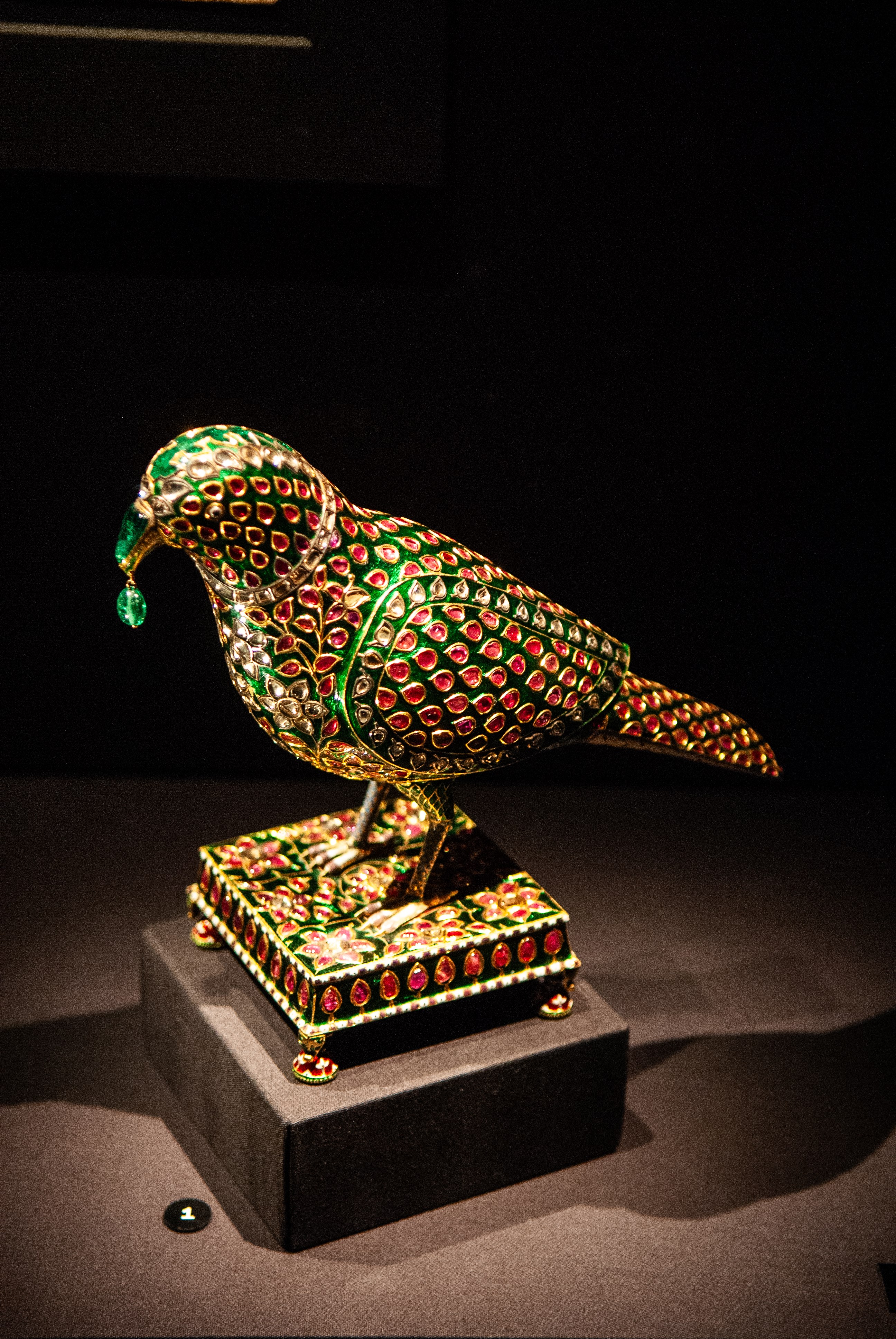
Parrot, Hyderabad, India, АН 1188-1240/1775-1825 CE, Gold, lac, enamels, diamonds, rubies, emeralds, Al Thani Collection
Craftsmanship
Walking through Jeddah’s streets, one witnesses a blend of tradition and modernity as Vision 2030 reshapes the city, while heritage preservation remains a key focus. In the Al-Balad district, initiatives like the Zawiya 97 workshop celebrate this balance, where artisans craft traditional Al-Rawashin windows, preserving a vital architectural feature. Amir’s visit to Al-Balad, with its mix of old and new, deepened his understanding of craftsmanship as not only a way to preserve the past but to adapt tradition to contemporary needs.
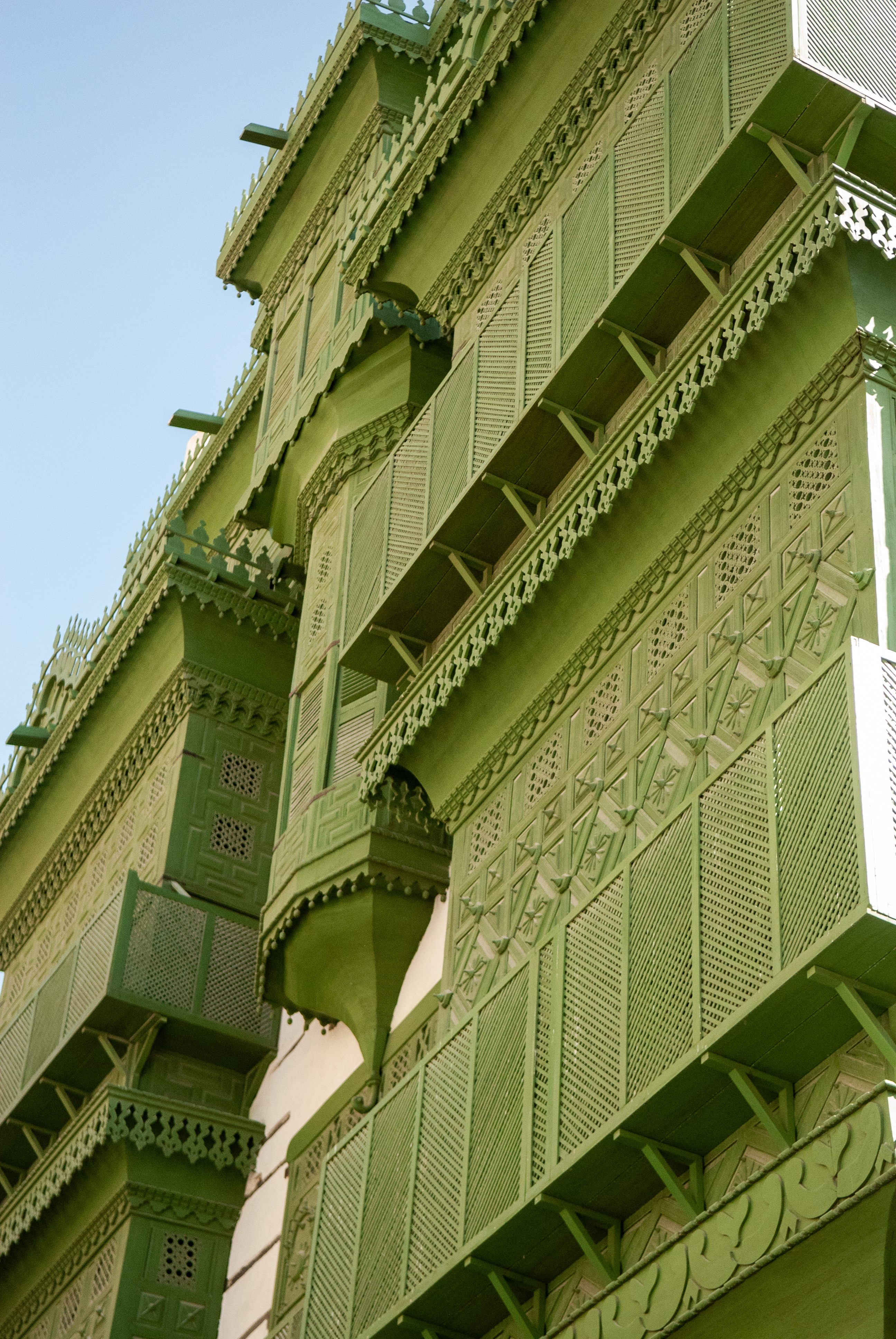
Traditional buildings with Al-Rawashin windows
John Ramsay Oliver, Country Director of Turquoise Mountain in Saudi Arabia, echoed this view, highlighting their mission to support artisans in creating heritage-based handicrafts that thrive in both domestic and international markets, ensuring these traditions stay relevant for future generations. He underscores the importance of preserving traditional craftsmanship while adapting it for contemporary markets, noting the rapid development of Saudi Arabia’s craft sector. His organisation focuses on revitalising traditional techniques through collaborations with the Ministry of Culture and the Royal Commission for AlUla, helping to bridge the past and present.
Saudi Arabia is undergoing a cultural transformation, with the Kingdom making bold steps to elevate the role of arts and culture on both national and international stages. At the heart of this evolution was the Islamic Arts Biennale 2025 in Jeddah—a landmark event, which just entered its final week, closing 25 May. Centered on historic Islamic objects, the Biennale provided a dynamic platform for exploring Islamic art across different time periods.
Two renowned London-based art dealers, Lawrence Van Hagen and Amir Mohtashemi, attended the Biennale, offering unique perspectives on how the event bridged the past and present, particularly in the dialogue between contemporary and antique Islamic art. Adding further depth to the conversation, John Ramsay Oliver, Country Director of Turquoise Mountain in Saudi Arabia, shared insights from the perspective of the global charity, highlighting its role in preserving and promoting traditional craftsmanship in the region.
Spirituality and Identity in Islamic Art:
Hosted at King Abdulaziz International Airport, within the historic Western Hajj Terminal designed by Skidmore, Owings & Merrill (SOM), the venue was strategically located near the holiest cities in the Islamic world, Makkah and Madinah. Named after the annual pilgrimage to Makkah, the terminal served as a key departure point for pilgrims, further deepening the event’s connection to spiritual journeys. The Biennale’s spatial design blended indoor and expansive outdoor areas, encouraging both communal gatherings and solitary moments of reflection, particularly in the gardens filled with monumental contemporary installations. Visitors were able to sit on the benches, feel the subtle wind, and spend as much time as they wanted, often reaching a meditative state.

Outdoor spaces at Islamic Arts Biennale 2025
Van Hagen noticed that the blending of past and present provides “fresh insights into the evolving role of religion in today’s world.” He points out that revisiting religious iconography in contemporary art is “not a new phenomenon,” and highlights exhibiting artists such as Nicolas Party, whose works resembles Renaissance-style altarpieces, and Jem Perucchini, who incorporates golden frames and religious symbols like staffs and handheld orbs, drawing on Catholic iconography. Amir Mohtashemi agrees with Lawrence but also emphasises the importance of preserving the spiritual depth inherent in traditional Islamic art. “While contemporary works contribute to the conversation, we must not lose sight of the historical and spiritual dimensions that have shaped Islamic artistic traditions,” he argues. The curatorial team, led by the contemporary artist Muhannad Shono, the Contemporary Art Curator in the lead, balances the traditional and the modern perfectly. Lawrence points to his favourite piece Before the Last Sky, a fabric installation by Nour Jaouda, as a prime example. Nour, a graduate of the Royal College of Art, sources fabrics from markets near her homes in Cairo and London, which she hand dyes. The raw, earthy quality, with rich desert browns and soft blues evoke the Saudi landscape, embodying how “modern aesthetics can blend with traditional Islamic concepts.” Lawrence also admires the architectural references in the metal frame supporting the installation, noting how the entire fabric element is composed of a harmonious balance of layered cut-out shapes and organic forms.
 Nour Janda, Before the Last Sky, 2025
Nour Janda, Before the Last Sky, 2025Biennale as a global platform
The Biennale also served as a global platform that united Islamic art from across the world, showcasing pieces loaned from major academic institutions such as the Louvre Museum, the V&A Museum, the Museum of Islamic Art, the Ahmed Baba Institute, and cultural centres in Saudi Arabia. This collaboration emphasized the rich heritage and ongoing presence of Islamic art, bringing together treasures from diverse locations including Tunis, Tashkent, Timbuktu, and Yogyakarta—many of which had never been seen together before. Lawrence Van Hagen noted that the Biennale was “not just a dynamic dialogue between different time periods, but also a conversation between various geographies, with works loaned from all over the world,” underscoring its role as a meeting point for a range of modern interpretations and practices of Islamic art. The event demonstrated how Islamic art had developed across different countries, with shared aims but distinct aesthetics shaped by geographical and cultural contexts.

Inside Al-Muqtani Pavillion
The exhibition was organised into seven thematic sections rather than following a chronological order, offering visitors the freedom to explore the works at their own pace. This approach encouraged reflection and interaction, with passionate young Saudi guides eager to share additional insights in each pavilion. As Amir Mohtashemi observed, “Each exhibition carved out its own narrative, offering a unique perspective while seamlessly complementing the others.”
One pavilion in particular, Al-Muqtani—meaning "homage"—left a lasting impression on Amir. Located in a grand exhibition space, it featured two extraordinary private collections of Islamic art. The juxtaposition of two collectors at different stages in their journeys—Sheikh Hamad bin Abdullah Al Thani, a passionate young collector with a fresh vision, and Rifaat Sheikh El Ard, a seasoned art patron with decades of experience—was a powerful way to show the engagement with Islamic art across generations. Seeing their collections side by side revealed not only their individual tastes but also how their selections spoke to one another, bridging tradition and contemporary appreciation.

Parrot, Hyderabad, India, АН 1188-1240/1775-1825 CE, Gold, lac, enamels, diamonds, rubies, emeralds, Al Thani Collection
Craftsmanship
Walking through Jeddah’s streets, one witnesses a blend of tradition and modernity as Vision 2030 reshapes the city, while heritage preservation remains a key focus. In the Al-Balad district, initiatives like the Zawiya 97 workshop celebrate this balance, where artisans craft traditional Al-Rawashin windows, preserving a vital architectural feature. Amir’s visit to Al-Balad, with its mix of old and new, deepened his understanding of craftsmanship as not only a way to preserve the past but to adapt tradition to contemporary needs.

Traditional buildings with Al-Rawashin windows
John Ramsay Oliver, Country Director of Turquoise Mountain in Saudi Arabia, echoed this view, highlighting their mission to support artisans in creating heritage-based handicrafts that thrive in both domestic and international markets, ensuring these traditions stay relevant for future generations. He underscores the importance of preserving traditional craftsmanship while adapting it for contemporary markets, noting the rapid development of Saudi Arabia’s craft sector. His organisation focuses on revitalising traditional techniques through collaborations with the Ministry of Culture and the Royal Commission for AlUla, helping to bridge the past and present.

